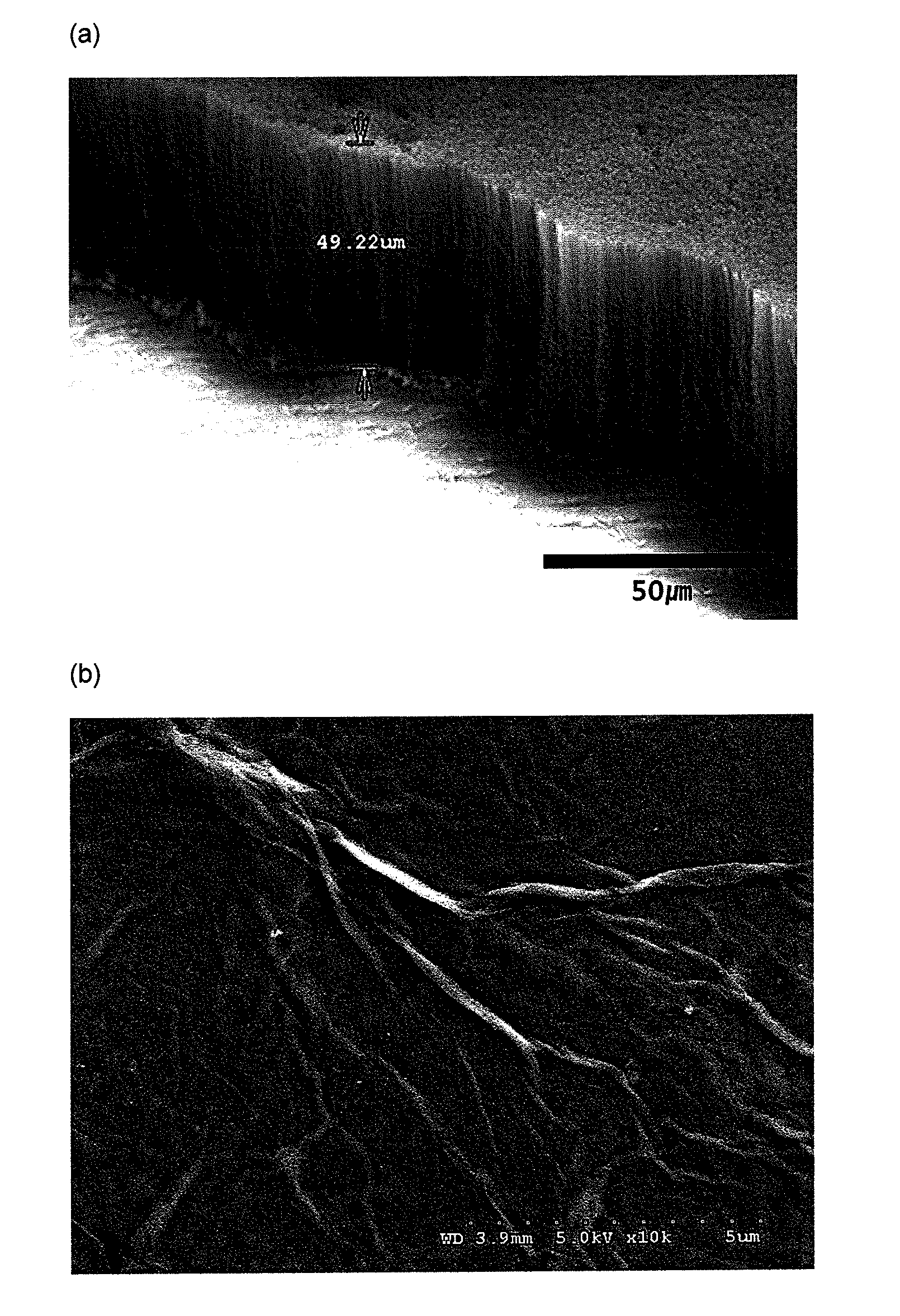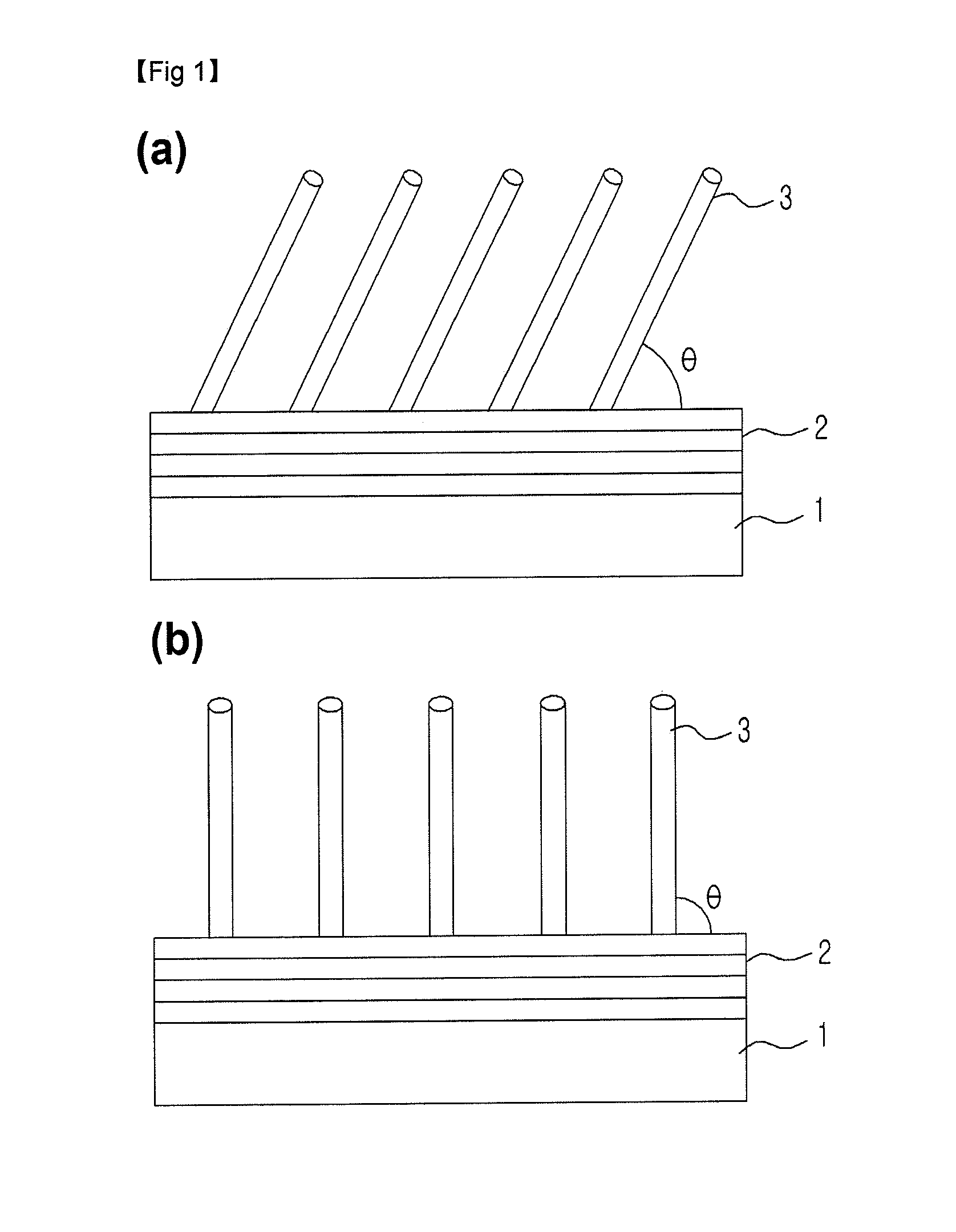Carbonaceous Nanocomposite Having Novel Structure And Fabrication Method Thereof
a carbonaceous nanocomposite and novel structure technology, applied in the direction of vacuum evaporation coating, transportation and packaging, coating, etc., can solve the problems of inconvenient mass production, difficult control of the thickness and length of carbon nanotubes, and inconvenient mass production methods, etc., to achieve excellent adhesion to the substrate, reduce the electrical resistance of graphene and carbon nanotubes, and high current density
- Summary
- Abstract
- Description
- Claims
- Application Information
AI Technical Summary
Benefits of technology
Problems solved by technology
Method used
Image
Examples
example 1
[0063]A silicon wafer was organically washed and an Fe catalyst was deposited to a thickness of 100 nm by RF ion sputtering. Then, the wafer was heated at 900° C. for 30 minutes at a pressure of 60 torr while flowing Ar gas at 500 sccm. After keeping at 900° C. for 5 minutes, carbon nanotube was grown for 10 minutes while flowing methane gas at 25 sccm. Then, several layers of graphene were grown on the silicon wafer by cooling for 50 minutes while flowing hydrogen gas at 500 sccm.
example 2
[0064]A vial was placed on a hot plate and, after adding H2SO4 (6 mL), heated to 80° C. After weighing and slowly adding K2S2O8 and P2O5 (2 g), graphite powder (4 g) was added. When deep blue color was developed, the reaction mixture was cooled at room temperature (25° C.) for 6 hours. Then, the graphite powder was filtered using filter paper. The filtered graphite powder was washed with deionized water until pH 7.
[0065]After filtration and washing, the graphite powder was dried overnight at room temperature (25° C.) to obtain graphite oxide (GO). An ice box containing a Teflon beaker, ice and salt was placed on a mechanical stirrer. Then, saturated H2SO4 (92 mL) and the graphite oxide were added to the Teflon beaker.
[0066]KMnO4 (12 g) was slowly added while keeping the temperature inside the Teflon beaker at 20° C. or lower. When the reaction became stable after the addition of KMnO4, the mixture was stirred at 35° C. for 2 hours. Then, deionized water (185 mL) was slowly added. 15...
example 3
[0067]Experiment was carried out in the same manner as in Example 2, except for dip coating a substrate in a graphite oxide solution, heating in a furnace at 300° C. for 5 hours and reducing oxygen by annealing to prepare graphene, in order to remove oxide groups from graphite oxide.
PUM
| Property | Measurement | Unit |
|---|---|---|
| Thickness | aaaaa | aaaaa |
| Angle | aaaaa | aaaaa |
| Diameter | aaaaa | aaaaa |
Abstract
Description
Claims
Application Information
 Login to View More
Login to View More - R&D
- Intellectual Property
- Life Sciences
- Materials
- Tech Scout
- Unparalleled Data Quality
- Higher Quality Content
- 60% Fewer Hallucinations
Browse by: Latest US Patents, China's latest patents, Technical Efficacy Thesaurus, Application Domain, Technology Topic, Popular Technical Reports.
© 2025 PatSnap. All rights reserved.Legal|Privacy policy|Modern Slavery Act Transparency Statement|Sitemap|About US| Contact US: help@patsnap.com



